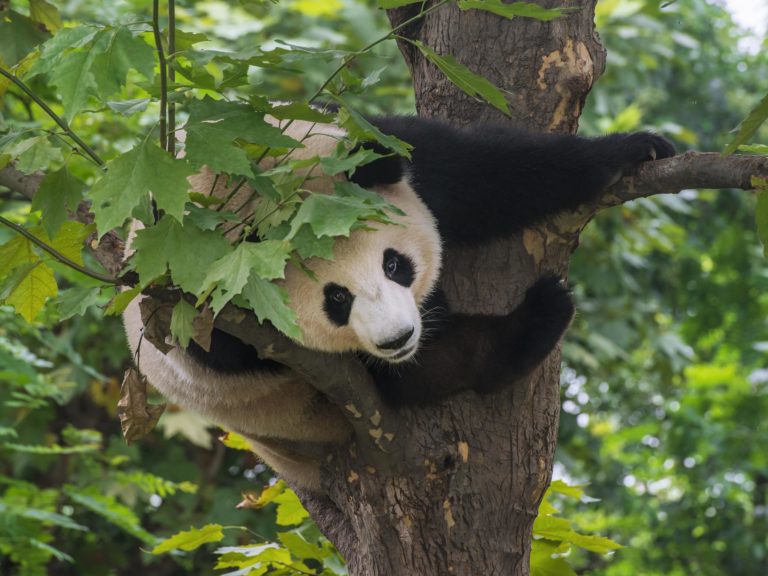What Are The Actual Costs And Conditions For Renting Giant Pandas?
From London to Madrid, D.C to Hong Kong, every zoo that hosts a panda actually rents them from China. So what are the actual costs for renting Giant Pandas?

We regard them as cute and cuddly and one of China’s most iconic beings. But today, Giant Pandas aren’t just a symbol of China, they are a major diplomatic tool and the face of wildlife conservation worldwide.
Even the WWF (World Wildlife Fund For Nature) uses the panda bear on its logo.
Another very unique feature of giant pandas is that unlike most other animals that could be kept as exotic pets, you’ll never find one of these creatures in anyone’s private collection.
That’s right. There are just about 2,000 of these bears alive today and every one of them belongs to China.
From London to Madrid, D.C to Hong Kong, every zoo that hosts a panda actually rents them from China and at a pretty steep price tag too. Usually in the range of 1 million to at least half a million US dollars for each animal. The bears typically remain at the zoo for a 5 to 10 year period depending on the agreement.
Initially, China gave these creatures out as gifts but that changed in 1984 when they began renting them out instead.
The general idea behind this arrangement is that a considerable part of the money paid is sent back to China for giant panda conservation and breeding efforts.
But interestingly, paying these hefty sums is just one aspect of renting a giant panda. Taking care of the animals is another ball game entirely.
Below we’ll look at some of the conditions that must be met before renting giant pandas.
Conditions For Successfully Renting Giant Pandas

Apart from acquiring them, giant pandas are not cheap to maintain. Before China hands over any of its precious pandas to an interested nation, the host must agree to many conditions. A few of them are:
- The host must show evidence of their ability to provide special housing, medical care, and large amounts of fresh bamboo everyday. Considering that a fully grown panda bear can eat up to 40 pounds of this special plant daily, that’s quite an expensive venture. Also, if the bamboo is not fresh, the bears won’t eat it. So the host must find a way to grow it nearby or import a fresh supply regularly.
- The Chinese government requires that the host takes out a life insurance policy on each panda that it loans out. Typically, the policy amount is US $1 million payable to China if the panda dies. An additional sum is also paid if the panda died from improper care or some form of caretaker error.
- Any cubs born to a rented panda remains the property of China and must be returned to the country when the animal reaches about two years old.
- The host zoo pays a conservation fee of US $400,000 to China if a giant panda gives birth after 12 months.
- The bears are to undergo at least one comprehensive medical examination every year and the host will provide the examination report to China.
At the onset of “Panda diplomacy”, China would gift out pandas to various nations as a way of strengthening diplomatic bonds. In fact, they gave up more than 23 pandas to nine countries like Great Britain, Japan, and the United States.
Are Giant Pandas Worth The Expense To Keep Them?
Let’s take a quick look at some giant panda related figures:
- Toronto Zoo, Canada rents its pandas at US $2.5 million per year.
- Zoo Atlanta, USA hosts its pandas at US 1.15 million and 2 cubs at US $ 800,000 annually.
- Adelaide Zoo, Australia has 2 pandas at US 5.18 million payable over a 10-year period.
- San Diego Zoo, US has spent US $ 45. 8 million on its pandas since 1996!
Taking the case of the San Diego Zoo, for instance, the cost to maintain its pandas for the last 20 years has rung up a bill of about $40 million. That sounds extremely high and observers may wonder if it’s really worth that much money?
Well, David Walsh, the president of Zoo Advisors, says that though they are expensive to maintain and exhibit, it makes economic sense because they draw such large crowds.
Some zoos experience record-breaking attendance rates once they begin to exhibit pandas.
So, now you know why no one keeps a giant panda as a private pet.
References:
1. http://www.aljazeera.com/indepth/interactive/2017/04/true-cost-panda-170406111225550.html
2. http://www.history.com/news/panda-diplomacy-the-worlds-cutest-ambassadors
3. http://timesofindia.indiatimes.com/chinas-panda-diplomacy-all-you-need-to-know.cms
4. http://www.globaltimes.cn/daily-specials/pandas-going-overseas-as-friendly-ambassadors.html
5. https://en.wikipedia.org/wiki/Panda_diplomacy
Photo Credits:
1. https://commons.wikimedia.org/wiki/File:San_Diego_Zoo_Street_Sign.jpg






